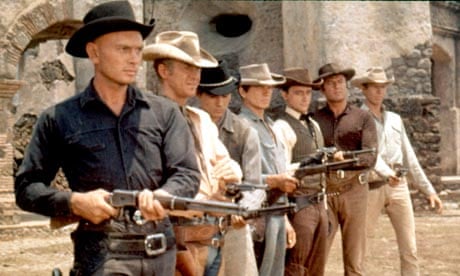I recently read, in this paper, an elegant and fascinating review by Steven Poole of a book called In Broad Daylight: Movies and Spectators After the Cinema, by Gabriele Pedullà. The book is about the fact that movies are now being consumed, not just in a big old building with curtains, a screen, and hot dogs, but on tinier screens that you can carry about the place: laptops, tablets, even smartphones – and what it all means for the medium of cinema itself. Poole writes: "Going to the cinema used to be the only way you could watch a film. Now you can do it anywhere."
This is a very fashionable topic among film-writers: the allegedly contemporary phenomenon of watching films outside the cinema. We all brood about this challenging new digital-age issue and its significance. But wait. Surely there has been, for some time, another continuously streaming smallscreen platform for the cinema. It's called … the telly. Since the 1940s, movies have been shown on TV. Think. Where did you first see a film? Not in the cinema, I'll bet – but on television. Show me a fastidious cinema purist who can't bear to watch a film on anything other than a big screen – and I'll show you someone who first saw Singin' in the Rain on his mum and dad's crummy old telly, and loved it.
And yet there isn't the same agonised cultural studies industry around the issue of consuming films on TV. I grew up watching films on both the BBC and independent stations, without particularly caring that films on ITV would be regularly interrupted with crassly timed commercial breaks. The rhythm and structure of a film, so carefully constructed by the director, would be cheerfully chopped up. Ad breaks in TV drama, on the other hand, would be announced with a stately "End of Part One", indicating that they were deliberately positioned, like theatrical intervals. But the ad breaks in films just suddenly appeared, flashing up a still from the movie along with its title, and off you went to put the kettle on. But while standing in the kitchen, you didn't think: "Hmmmm. These commercial breaks on ITV – are they creating a new form of discontinuous anti-narrative expectation in the way we consume cinema?"
There were other strange things as well. In the 1970s, widescreen films would be shown cropped at either side to fit the small screen – the "pan and scan" approach – but often not at the beginning and the end, weirdly. To show the credits in full, the broadcaster would squash the image so that the lettering and the figures looked tall and thin, like Giacometti sculptures. As a kid, I remember watching The Magnificent Seven (pictured) on TV and noticing that, at the end, things suddenly went squashy and tall as the credits rolled. It was very strange. I vaguely understood that this surreal "lengthening" effect had something to do with the film's ending, though without wondering: "Is there a new narrative expectation of freakish tallness in the way we consume cinema?"
Well, however chaotically presented they were, films on TV were a benign gateway drug. They introduced me and many others to movies on the big screen. I suspect the "post-cinema" experience of films on iPads and iPhones will do the same thing. I've ordered a copy of Pedullà's book, as the question of watching films outside the cinema is indeed interesting. But it's not exactly new.
My cultural life
On my iPod: Beethoven Piano Sonata No 17 (The Tempest), Maurizio Pollini.
On my TV: Bert and Dickie, the drama of the double sculls in the 1948 Olympics.
On my bedside table: Hawthorn & Child by Keith Ridgway.
In my diary: NW by Zadie Smith, out in September.

Comments (…)
Sign in or create your Guardian account to join the discussion